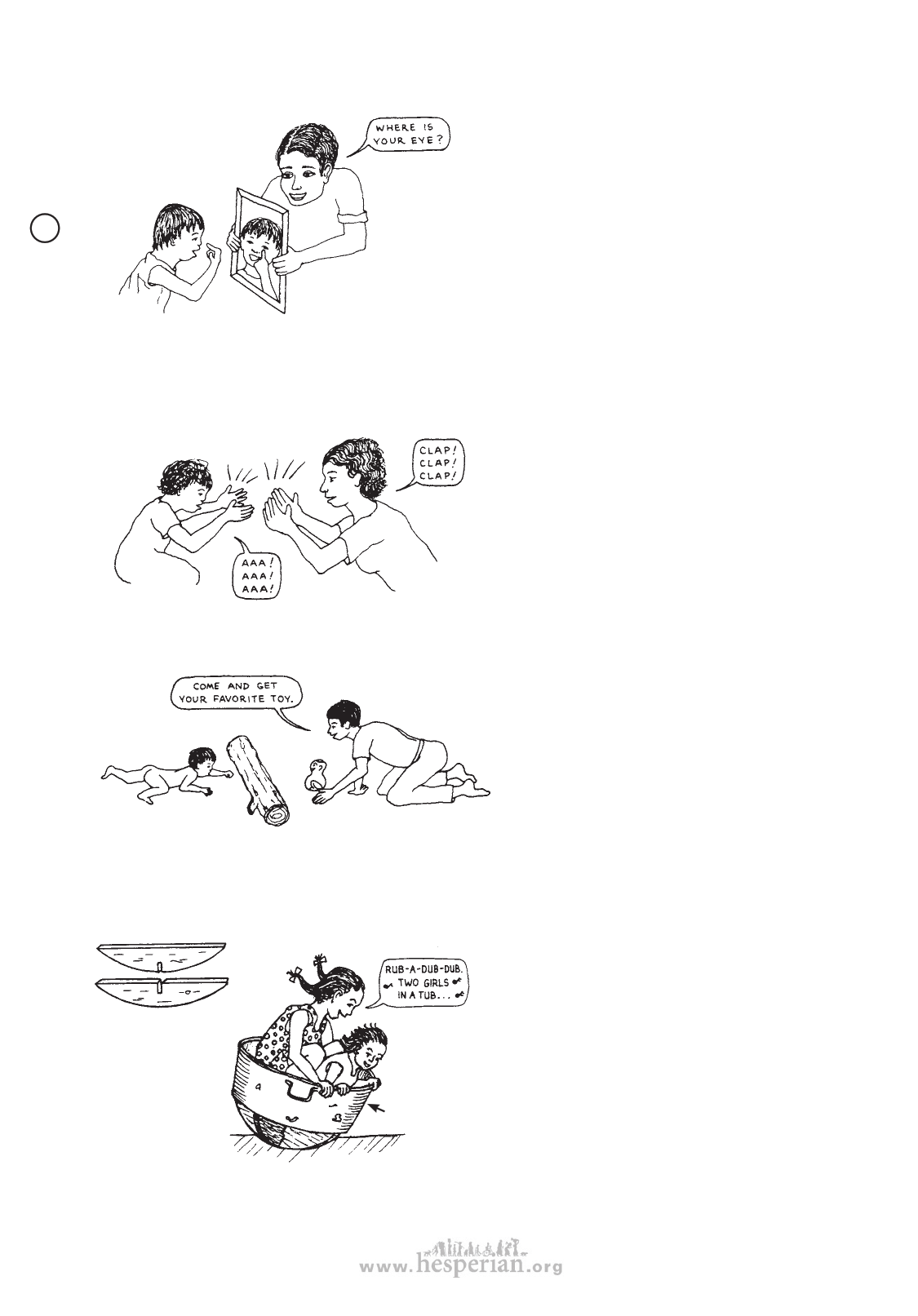
298 chapter 34
4. Use a mirror to help the child learn about his
body and to use his hands.
cp
Explanation
The mirror helps the child see and
recognize parts of his body. It is
especially useful for children who
have difficulty relating to different
parts of their body or knowing
where they are. (This can happen
in some forms of mental slowness,
cerebral palsy, spinal cord injury, and
spina bifida.)
5. Use imitation (copying). To teach a new
action or skill, do something first and
encourage the child to copy you. Turn it into
a game.
Explanation
Many mentally slow children
(especially those with Down
syndrome) love to copy or imitate
the actions of others. This is a
good way to teach many things,
from physical activities to sounds
and words.
6. Encourage the child to reach out or go for
what he wants.
When it gets too easy, put obstacles in the way—but do
not make them too difficult.
7. Make learning fun. Always look for ways to
turn learning activities into play.
2 pieces of wood
notched to fit
together
crosswise
old tub
Explanation
Even at early stages of development,
it is a mistake to always place in his
hands what a child wants. Instead,
use the child’s desire as a chance to
have him use his developing body
skills and language skills to get what
he wants—by reaching, twisting,
rising, creeping, or whatever he is
learning to do.
Explanation
Children learn best and cooperate
more when they enjoy and are
excited by what they are doing.
Keep doing an activity as long as
it is fun for the child. As soon as it
stops being fun, stop the activity
for a while, or change it in some
way, to put new adventure and
excitement into it.
Disabled village Children